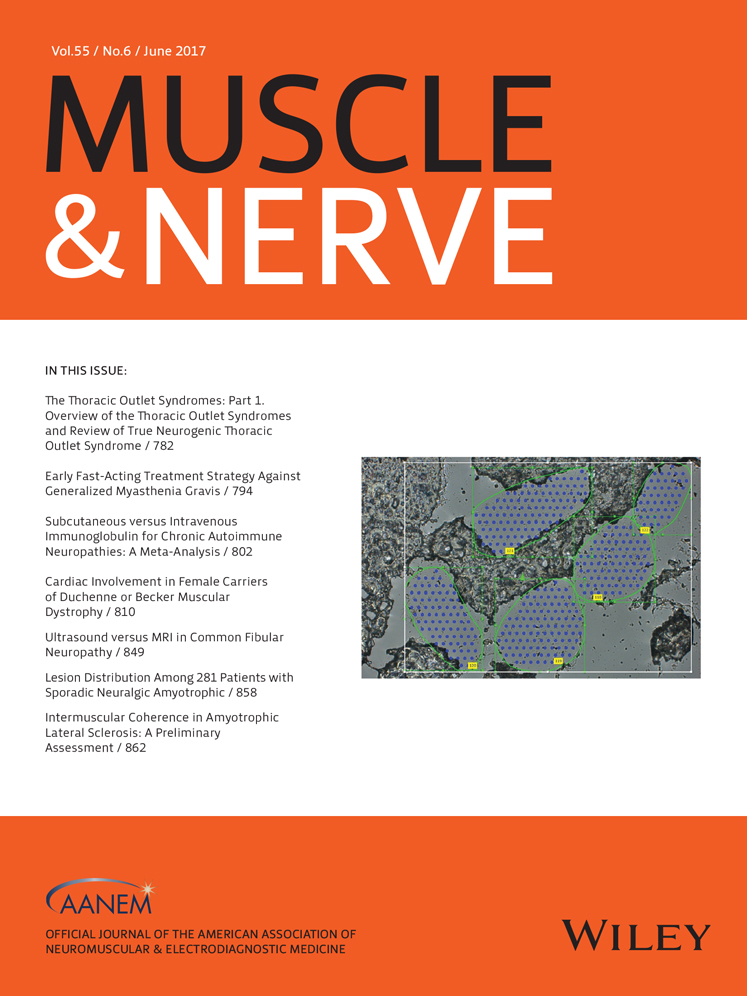Selected Highlights in the June, 2017
Early Fast-Acting Treatment Strategy Against Generalized Myasthenia Gravis (Page 794)
The clinician treating a patient with myasthenia gravis has many options. The over-arching question, of course, is, “what is best for the patient?” In this large retrospective study, the authors found that an aggressive initial approach was most benefi cial. An accompanying editorial in this issue by Silvestri and Wolfe provides expert commentary.
Intravenous immunoglobulin (IVIG) is well-accepted therapy for chronic infl ammatory demyelinating polyneuropathy and multifocal motor neuropathy. Subcutaneous administration of immunoglobulin may be preferable for some patients. This meta-analysis found similar effi cacy and safety. However, as discussed in the editorial by Naddaf, Murad, and Dyck, further study is warranted.
Cardiac Involvement in Female Carriers of Duchenne or Becker Muscular Dystrophy (Page 810)
Dystrophinopathies are X-linked disorders associated with cardiac muscle dysfunction. Females may develop muscle weakness, but the extent of their cardiac involvement is less clear. In this retrospective study, the authors found that cardiac involvement may occur, but was not related to age, phenotype, muscle symptoms, or CK level. Childers, in an editorial in this issue, explores the potential for scientists to use pluripotent stem cells and animal models to apply this knowledge to the development of treatments.
Ultrasound versus MRI in Common Fibular Neuropathy (Page 849)
Clinicians generally diagnose common fi bular (peroneal) neuropathy by clinical examination, supplemented by electrodiagnosis. Ultrasound and MRI can both be used to aid in diagnosis, although ultrasound is generally more accessible and convenient for most electromyographers. The authors of this study found the accuracy of ultrasound to be slightly higher than that of MRI.
Lesion Distribution Among 281 Patients with Sporadic Neuralgic Amyotrophic (Page 858)
Neuralgic amyotrophy is also referred to as idiopathic brachial plexopathy, but clinicians are familiar with the patchy nature of the clinical defi cits. In this meticulous retrospective review, the author found pure and predominantly motor nerves to be most frequently involved, particularly the suprascapular and long thoracic nerves. This pattern of involvement explains the clinical fi ndings, which often are those of predominantly single-muscle weakness and atrophy.
Intermuscular Coherence in Amyotrophic Lateral Sclerosis: a Preliminary Assessment (Page 862)
Clinicians and clinical investigators lack reliable, objective measures of upper motor neuron dysfunction. This is particularly relevant for ALS, in which assessment of both upper and lower motor neuron fi ndings is essential for diagnosis and advantageous for assessing treatment effi cacy. In this prospective study, the investigators found intermuscular coherence to be decreased in patients with ALS, raising the possibility that it may be a suitable biomarker for this disease.




